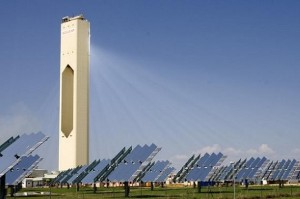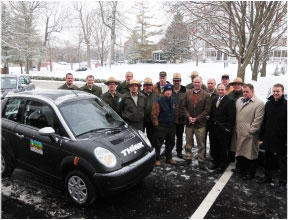 Beyond Solar the US based international non profit that provides educational, medical, and economic well being for communities in the developing world by providing solar powered electricity is initiating a new project in South Africa. Beyond Solar’s approach to community development is a hybrid systems that blends traditional donation models with basic microfinance concepts. They provide capital to finance the purchase of solar powered lighting products and villagers make weekly payments for the products they receive. By providing inexpensive and sustainable energy Beyond Solar seeks to increase exposure and facilitate solar power adoption rate.
Beyond Solar the US based international non profit that provides educational, medical, and economic well being for communities in the developing world by providing solar powered electricity is initiating a new project in South Africa. Beyond Solar’s approach to community development is a hybrid systems that blends traditional donation models with basic microfinance concepts. They provide capital to finance the purchase of solar powered lighting products and villagers make weekly payments for the products they receive. By providing inexpensive and sustainable energy Beyond Solar seeks to increase exposure and facilitate solar power adoption rate.
“Throughout the year we have received a lot of inquiries and interest about our two previous distributions in Orissa, India. We are pleased to report that our process of using your donated funds to provide lights to the villages in Orissa has made a tremendous impact. Even more exciting is that our use of micro-financing principals has been a success. Beneficiaries have made “payments” to cover the cost of their lights, which were funded by their increased productivity as well as the money saved on kerosene they didn’t have to buy. These payments were deposited into a fund that was administered by village leaders, and upon complete repayment of the loans, the money was returned to the villagers for future development projects; the funds you give continue to give!” said Jeff Olshesky Beyond Solar Co Founder.
Olshesky, also commented, “In the coming weeks, I will be sending more updates about our new project. In the meantime, I ask that you consider making a tax-deductable donation to Beyond Solar. Our goal is to distribute lights to 300 households and to do this, we need to raise approximately $10,000. Give the gift of light this holiday season.” To make a donation, simply go to Beyond Solar.






